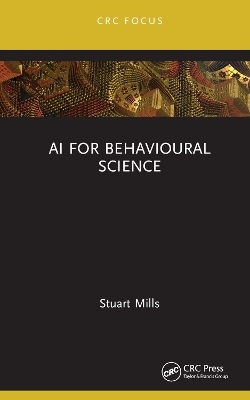
AI for Behavioural Science
Seiten
2022
CRC Press (Verlag)
978-1-032-06669-1 (ISBN)
CRC Press (Verlag)
978-1-032-06669-1 (ISBN)
This book is a concise introduction to emerging concepts and ideas found at the intersection of contemporary behavioural science and artificial intelligence. It explores how these disciplines interact, change and adapt to one another, and what the implications of such an interaction are for practice and society.
This book is a concise introduction to emerging concepts and ideas found at the intersection of contemporary behavioural science and artificial intelligence. The book explores how these disciplines interact, change, and adapt to one another and what the implications of such an interaction are for practice and society.
AI for Behavioural Science book begins by exploring the field of machine behaviour, which advocates using behavioural science to investigate artificial intelligence. This perspective is built upon to develop a framework of terminology that treats humans and machines as comparable entities possessing their own motive power. From here, the notion of artificial intelligence systems becoming choice architects is explored through a series of reconceptualisations. The architecting of choices is reconceptualised as a process of selection from a set of choice architectural designs, while human behaviour is reconceptualised in terms of probabilistic outcomes. The material difference between the so-called "manual nudging" and "automatic nudging" (or hypernudging) is then explored. The book concludes with a discussion of who is responsible for autonomous choice architects.
This book is a concise introduction to emerging concepts and ideas found at the intersection of contemporary behavioural science and artificial intelligence. The book explores how these disciplines interact, change, and adapt to one another and what the implications of such an interaction are for practice and society.
AI for Behavioural Science book begins by exploring the field of machine behaviour, which advocates using behavioural science to investigate artificial intelligence. This perspective is built upon to develop a framework of terminology that treats humans and machines as comparable entities possessing their own motive power. From here, the notion of artificial intelligence systems becoming choice architects is explored through a series of reconceptualisations. The architecting of choices is reconceptualised as a process of selection from a set of choice architectural designs, while human behaviour is reconceptualised in terms of probabilistic outcomes. The material difference between the so-called "manual nudging" and "automatic nudging" (or hypernudging) is then explored. The book concludes with a discussion of who is responsible for autonomous choice architects.
Stuart Mills is a behavioural economist with a background in economics and political economy. His research focuses on nudge theory, personalisation, and digital economy. He is interested in the intersection of technology, data, and behavioural science within public policy and finance, as well as the wider political economy implications.
1. Human Behaviour and Machine Behaviour. 2. Definitions. 3. The Autonomous Choice Architect. 4. AI Knows Best. 5. Some Concluding Discussions
| Erscheinungsdatum | 21.11.2022 |
|---|---|
| Zusatzinfo | 3 Tables, black and white; 5 Line drawings, black and white; 5 Illustrations, black and white |
| Verlagsort | London |
| Sprache | englisch |
| Maße | 138 x 216 mm |
| Gewicht | 520 g |
| Themenwelt | Geisteswissenschaften ► Psychologie ► Allgemeine Psychologie |
| Informatik ► Theorie / Studium ► Künstliche Intelligenz / Robotik | |
| ISBN-10 | 1-032-06669-5 / 1032066695 |
| ISBN-13 | 978-1-032-06669-1 / 9781032066691 |
| Zustand | Neuware |
| Informationen gemäß Produktsicherheitsverordnung (GPSR) | |
| Haben Sie eine Frage zum Produkt? |
Mehr entdecken
aus dem Bereich
aus dem Bereich
Buch | Softcover (2024)
REDLINE (Verlag)
CHF 27,95
Eine kurze Geschichte der Informationsnetzwerke von der Steinzeit bis …
Buch | Hardcover (2024)
Penguin (Verlag)
CHF 39,20
was sie kann & was uns erwartet
Buch | Softcover (2023)
C.H.Beck (Verlag)
CHF 25,20


